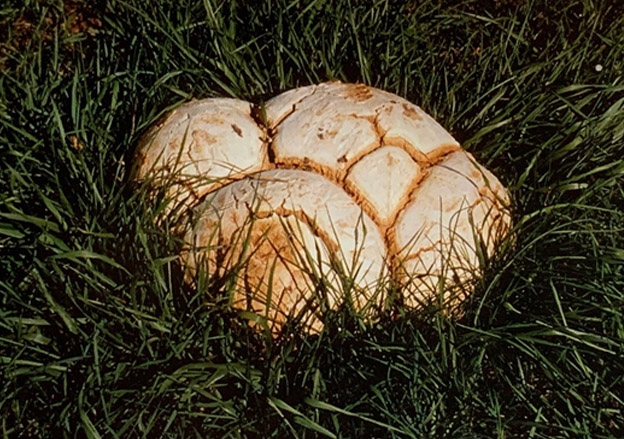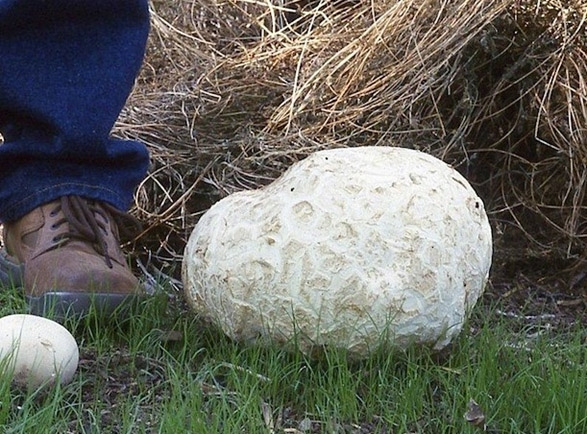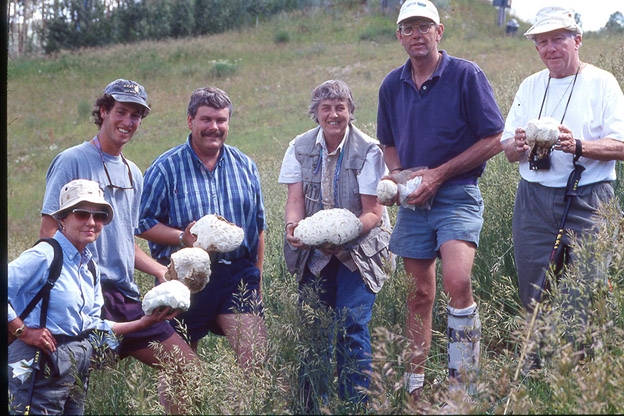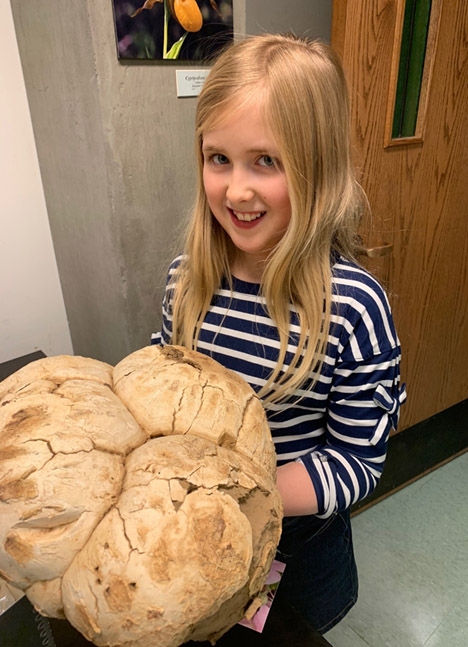From the Vault: Fred
When fungal specimens are rare, or large and unique in their shapes, hikers and lovers of Mother Nature’s beauty will usually pay considerable attention to them when they find them in their natural habitats…and often collect and/or photograph them. If these remarkable fungi are highlighted in a large open field or prairieland habitats, the discoverer pays even more attention! Thus, the rare Colorado native western giant puffball, Calvatia booniana and its relatives in the gasteroid (stomach-shaped) fungi are some of our treasured “specimens from the vault” that have been highlighted recently at the Sam Mitchel Herbarium of Fungi located in the Freyer – Newman Center for Science, Art and Education.

The original specimen (Fred) in its natural habitat
Returning from teaching a field course in the Snowmass/Aspen region one summer day, I spotted this giant puffball and its siblings in the midst of a grassy horse pasture near the road along Brush Creek in Eagle County, Colorado. Preparing to present my Denver Botanic Gardens’ credentials, I knocked on the nearby ranch house door, ready to request entry into the horse pasture to obtain photographs. The amiable rancher granted my wish immediately but said that if it had been a couple of days later, he was going to use the big puffball as target practice, having named it Fred after an unwelcome developer up the canyon.
Of course, I said, “Please don’t shoot Fred! May I have ‘him’ for a specimen to be kept at the herbarium at Denver Botanic Gardens?” The rancher laughingly agreed and so we collected and photographed the huge specimen and went on our merry way, ending the encounter with a great big thanks! Thus, we always called the largest Calvatia booniana in our Sam Mitchel Herbarium collection “Fred.”

Compare the size of this specimen to a human foot!
Back at the herbarium at Denver Botanic Gardens, I discovered that Calvatia booniana is called the western giant puffball because it is only found in several of our western states, especially Colorado, Idaho, Utah and occasionally in Wyoming. There are a few reports of its occurrence in California but it does not occur in other parts of our country. It is indeed a remarkable huge western fungus!
The well-known mycologist Dr. Alexander Smith, who gave it its Latin name, named it after Dr. Boone, a professor who was teaching in Idaho and had told Dr. Smith about seeing these kinds of puffballs occasionally in some western prairieland in that state. So, the scientific Latin name is Calvatia booniana, the western giant puffball, but among us in the herbarium, the name “Fred” has stuck all these years!
Another year, during my teaching in Aspen, the class found a whole huge fairy ring of these special mushrooms under the ski lift in Snowmass. Some of those collections reside permanently at the Gardens, but none are as large as Fred!

A field class at the Aspen Center for Environmental Studies. Photo: Kenneth Evensen
Historically these large mushrooms have been used as food by native peoples and pioneers (as long as the insides remain white) and there are tales of early settlers collecting the huge objects to stuff in cracks in their “soddy” homes to keep the prairie breezes out!
Members of the genus Calvatia exhibit the general shapes of flattened cushions, and in this species, are connected to the substrate by a thick basal attachment. The outer surfaces of the “cushions” are initially whitish and felty but upon maturity they soon develop external deep cracks and raised warts with tan centers. Inside the outer casing are billions of fertile cells which evolve to form mature spores that are eventually released to spread to the surrounding environments through dispersal into air currents.
Although never common, specimens of Calvatia booniana can be found in montane meadows, low prairieland and sagebrush habitats and forest openings.

Fred is always popular with visitors of all ages to the Sam Mitchel Herbarium of Fungi.
Add new comment